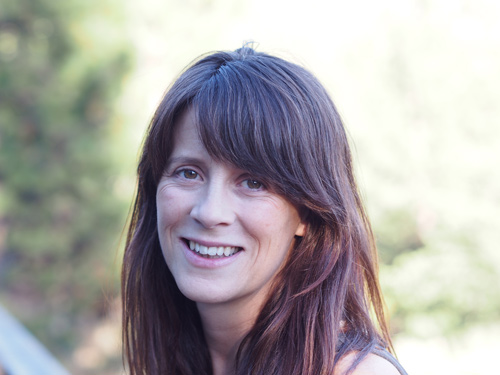
Professor Carolin Frank will collect $1.6 million over the next four years to continue researching the nitrogen-fixing bacteria that live in pine needles and to work with the Sierra Foothill Charter School, which she helped found.
 The National Science Foundation (NSF) selected Frank, with the School of Natural Sciences, and collaborators Lara Kueppers, Jennifer Pett-Ridge and Tanja Woyke at the Department of Energy National labs in Berkeley and Livermore, for its 4-year-old Dimensions of Biodiversity Award, designed to help fill gaps in understanding the many species of plants and animals on Earth.
The National Science Foundation (NSF) selected Frank, with the School of Natural Sciences, and collaborators Lara Kueppers, Jennifer Pett-Ridge and Tanja Woyke at the Department of Energy National labs in Berkeley and Livermore, for its 4-year-old Dimensions of Biodiversity Award, designed to help fill gaps in understanding the many species of plants and animals on Earth.
The NSF is distributing $23 million among 12 biodiversity projects this year.
Scientists funded by the Dimensions of Biodiversity program integrate genetic, taxonomic and functional approaches in their study and exploration.
“This is huge,” Frank said. “It will allow me and my collaborators to work on this fascinating problem for the next few years. UC Merced is a great place to be doing interdisciplinary team science.”
In contrast to traditional biodiversity research that focuses on one taxonomic group or ecosystem, Dimensions of Biodiversity integrates multiple aspects into research projects.
The program links functional, genetic and phylogenetic/taxonomic dimensions of biodiversity, offering opportunities to make rapid advances in understanding the generation, maintenance and loss of biodiversity.
“This year's portfolio of projects will accelerate our understanding of biodiversity across disciplines and across scales of time and space,” said Penny Firth, director of NSF's Division of Environmental Biology. “Through this program, we're witnessing a transformation in our ability to bridge scientific approaches and perspectives.”
The research will fill in gaps in biodiversity knowledge, Firth said. It also has the potential for significant effects on agriculture, fuel, manufacturing and health.
Dimensions of Biodiversity scientists are working to stem the tide of species losses around the world.
In the past few years, Frank and her graduate student Alyssa Carrell, who defended her Ph.D. this summer, discovered a novel symbiosis between pines and the bacteria inside their needles. Recently, Frank, Kueppers and postdoctoral fellow Andrew Moyes demonstrated that the bacteria, or endophytes, appear to fix atmospheric nitrogen.
That’s surprising because until now, only bacteria associated with a few forest plants, such as legumes and alders, and free-living bacteria in soil were known to do this. Nitrogen is critical to plant growth and development, but our understanding of the nitrogen budget is incomplete.
Frank’s discovery could help solve an ecological mystery: Where does all the nitrogen in forests come from?
“There’s more nitrogen in there than there should be, and these endophytes could be a previously 'hidden' source,” Frank said.
That could have huge implications for ecosystems and climate.
A better understanding of the microbes that fix nitrogen inside plants could help reduce fertilizer use and improve forecasts about climate change.
The grant will allow Frank to study the limber pine across its range, from Canada to New Mexico and Colorado to California. A teacher from the charter school will work with the researchers, too, and take what he or she learns back to the classroom. Frank will also help develop some curriculum for grade-school students, focused on environmental microbes.
Frank said she appreciates the opportunities the new grant affords.
“There hasn't really been a way to study most microbes in the environment until recently, when DNA sequencing technology became good enough to sequence lots of bacterial DNA from the environment and discover who's there,” she said. “The grant will allow us to study this symbiosis further and identify the specific bacteria that fix nitrogen.”
This is her second NSF grant this year. In the spring, she won a $150,000 Early-concept Grant for Exploratory Research (EAGER) award that supports exploratory work in its early stages on untested, but potentially transformative, research ideas or approaches.
“I have an undergraduate degree in engineering and a Ph.D. in molecular evolution, and was never trained in any one discipline. I tend to see connections among disciplines,” said Frank, who, as a graduate student at the University of Uppsala, Sweden, trained herself both as a computational and experimental biologist. “I think the interdisciplinary approach has great potential – that’s how we discovered this symbiosis – but sometimes I have wondered if the system is set up to fund that type of research, so this is very exciting!”
Lorena Anderson

Senior Writer and Public Information Representative
Office: (209) 228-4406
Mobile: (209) 201-6255






